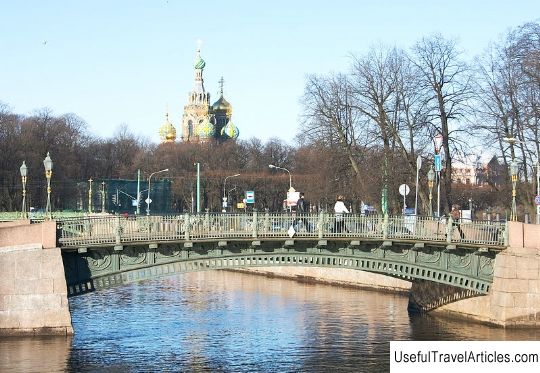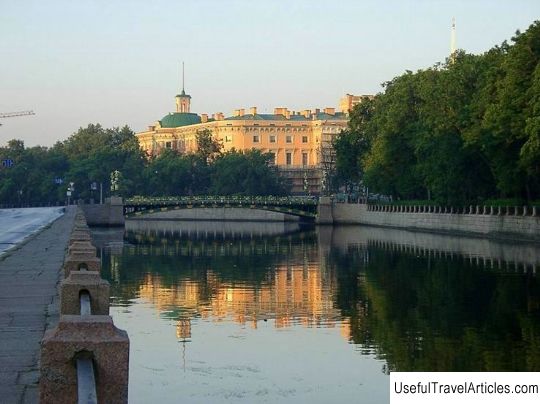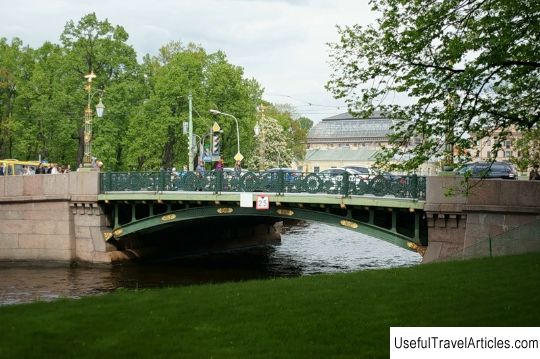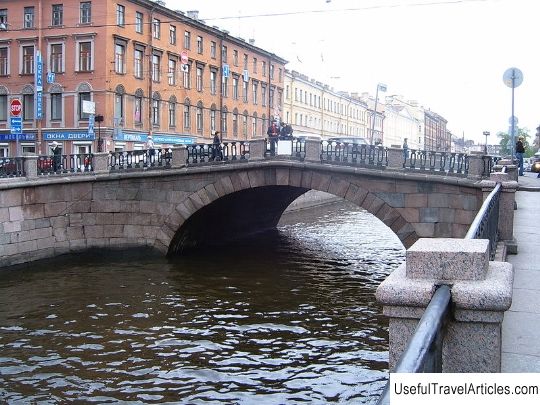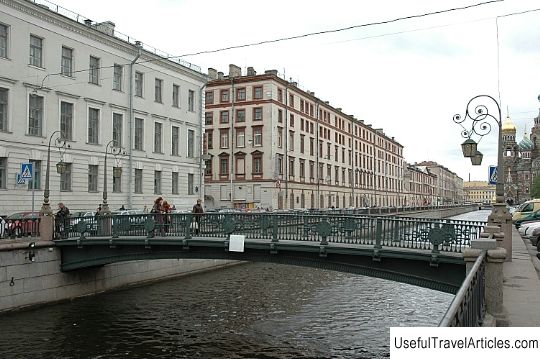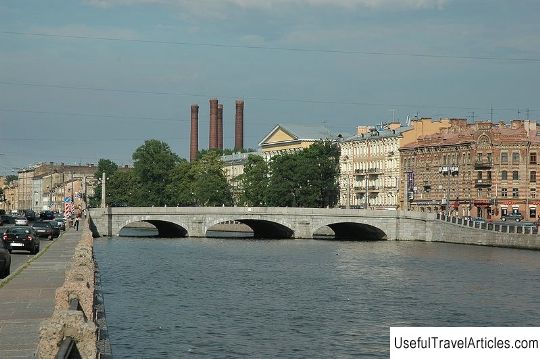Perviy Inzhenerny bridge description and photo - Russia - Saint Petersburg: Saint Petersburg
Rating: 7,7/10 (700 votes) First Inzhenerny bridge description and photo - Russia - St. Petersburg: St. Petersburg. Detailed information about the attraction. Description, photos and a map showing the nearest significant objects. Photo and descriptionThe First Engineering (originally called Summer) bridge is a continuation of the western (odd) embankment of the Fontanka between the Summer Garden and the Mikhailovsky Castle and connects the latter with Spassky Island in the Central District of St. Petersburg. In the 18th century, a wooden bridge-aqueduct, the work of the Dutchman G. van Boles, was a crossing at this place. Since the bridge was placed in the place where the river flows near the Summer Garden, it was named the Summer Bridge. In 1825, a new bridge was built on the site of the Summer one, designed by engineer P.P. Bazin in collaboration with E.C. Clapeyron. This bridge is unusual not only for its decoration, but also for its engineering solution: having no foundations and leaning on the granite slopes of the embankment and the supports of its rubble masonry, faced with purely hewn granite, the bridge seems to float in the air, partly because its piles, like the grillage, seem to "hold" it above the water. The design of the bridge provided for a number of interesting engineering solutions that lighten the weight of the cast-iron structure: the arch of the bridge was assembled from special lightweight cast-iron tubing with oval slots in the bottom and walls, which also led to the extraordinary lightness of the structure. The cast iron sections were bolted together, and their bottoms and walls were cut with openings, which made a significant contribution to reducing the weight of the vault, and the bridge footpaths, which by definition do not carry a large load, were carried out on the brackets outside the boundaries of the supporting structures. The cast iron structures of the bridge were cast at the plant by K.N. Byrd and the Aleksandrovsky iron foundry. The new bridge was nicknamed "First Engineer" for its proximity to the Mikhailovsky (Engineering) castle. The bridge still impresses passers-by with its original appearance and rich decoration: the arches along the perimeter are decorated with cast-iron castings in the form of antique helmets and shields, the lanterns are stylized as structures made of bunches of crossed spears connected in the middle by intertwining wreaths. The sections of the bridge railing are made as if from short spears-darts, connected by a horizontal rod. The pillars of the lattice represent the Lictor beams, on which swords or battle axes with shields are fixed. In the middle of a round shield, located on top of intersecting swords, is the head of Medusa the Gorgon (according to Greek myths, one of her glances turned a person into a stone statue). Exactly the same lattice enclose the Mikhailovsky Castle (on the north side) and the Summer Garden. The construction of the bridge ensemble near the Engineering Castle was carried out under the general supervision of the architect K.I. Rossi, who supervises the re-planning of the site between Fontanka, Moika, Ekaterininsky Canal (Griboyedov) and Nevsky Prospekt. The bridge stood for about a century and a half, but after the war, traffic on it was prohibited due to the subsidence of the supports and the progressive deformation of the superstructure. In 1951, the condition of the bridge was declared unusable and a decision was made to restore and overhaul it. It was rebuilt, the cast-iron vault was replaced with a steel one, reinforced with a prestressed frame with a curved beam, the roadway was made of a reinforced concrete slab. At the same time, the external appearance of the bridge was somewhat distorted, and the tubings were destroyed, but the decor of the facades and the Bazin gratings were restored. Hexagonal lanterns were recreated according to the project proposed by the architect A.L. Rotach. In 1994, a monument to the famous Chizhik-Pyzhik was erected near the bridge.      We also recommend reading Hippodrome description and photos - Turkey: Istanbul Topic: Perviy Inzhenerny bridge description and photo - Russia - Saint Petersburg: Saint Petersburg. |
